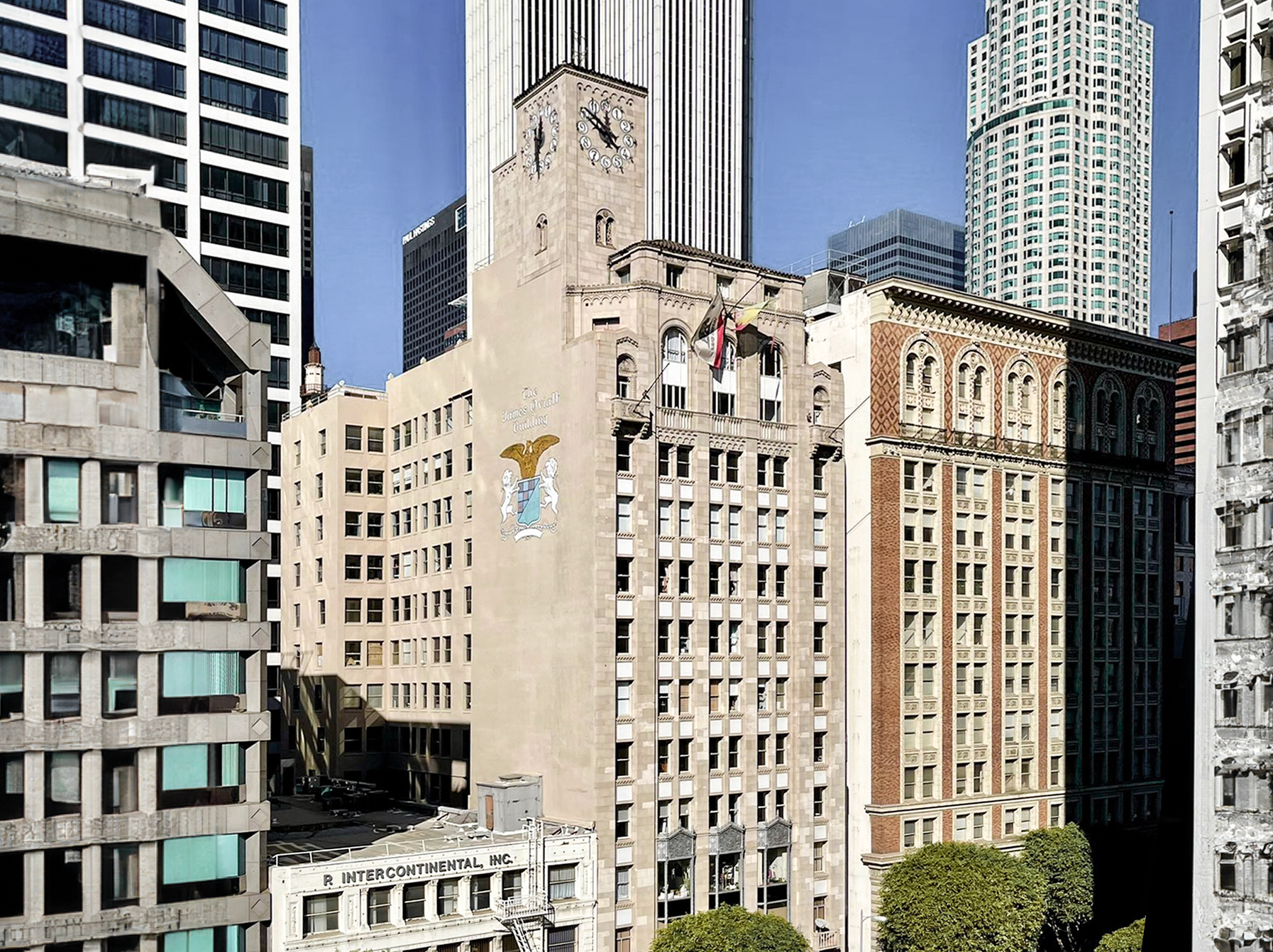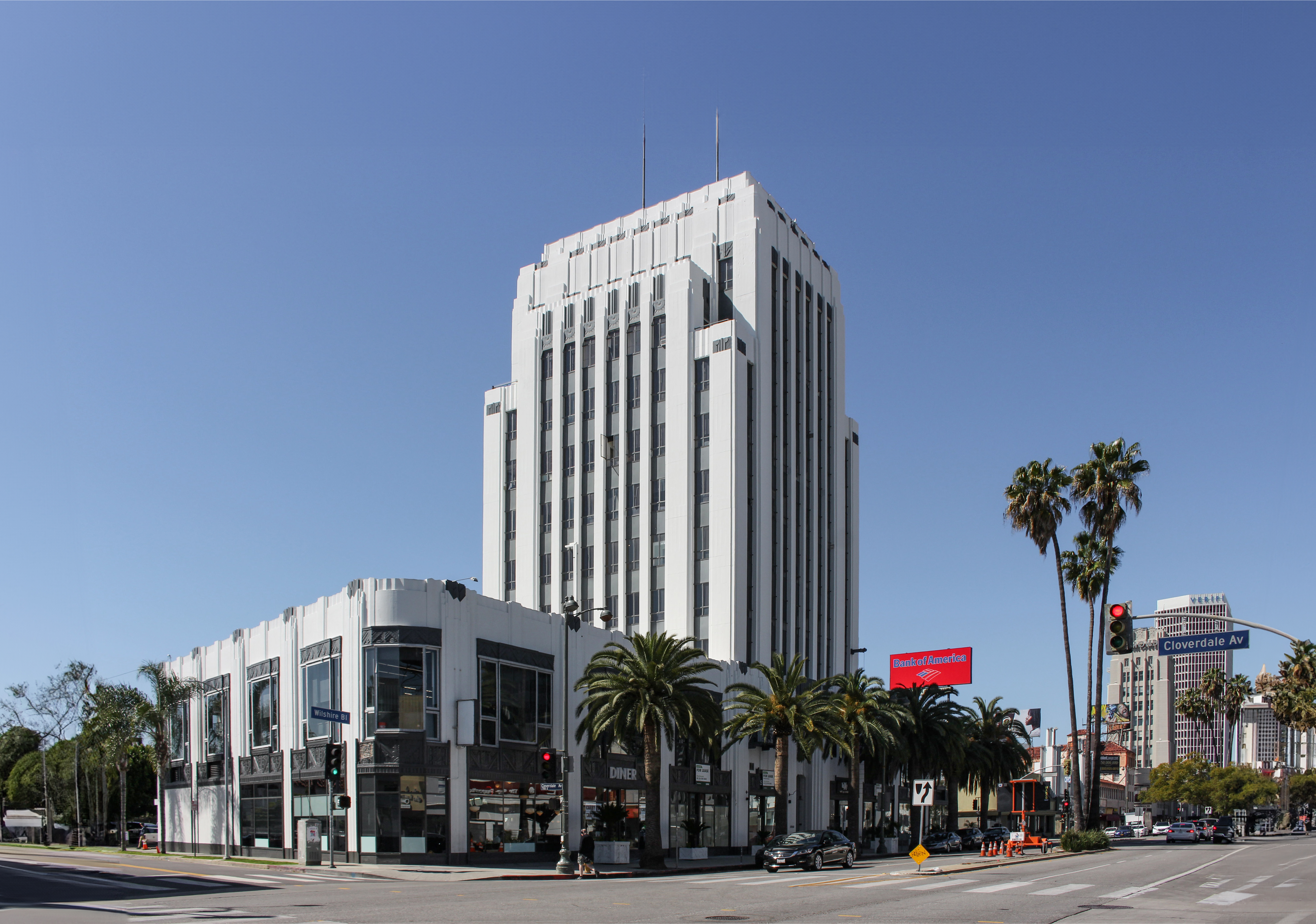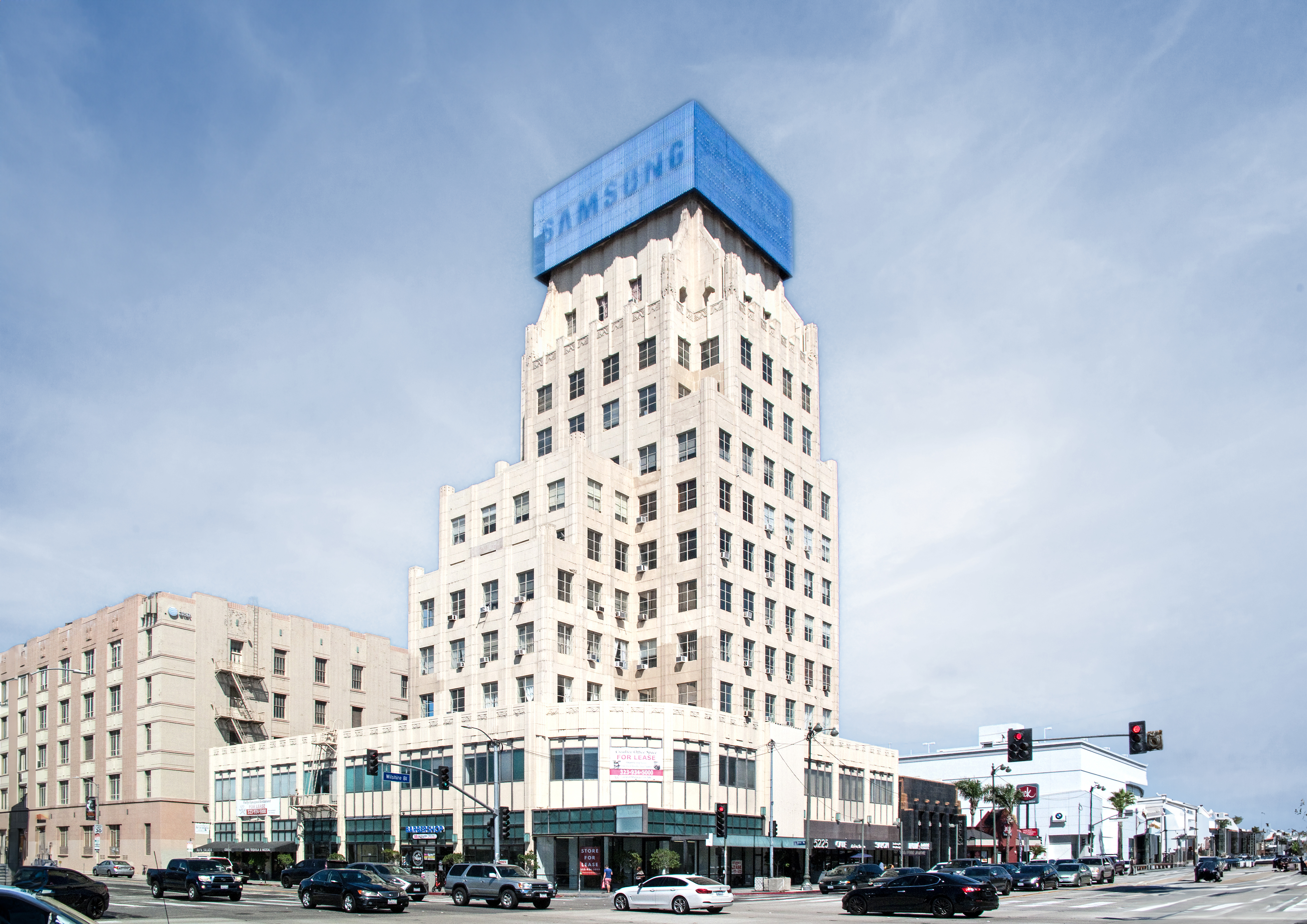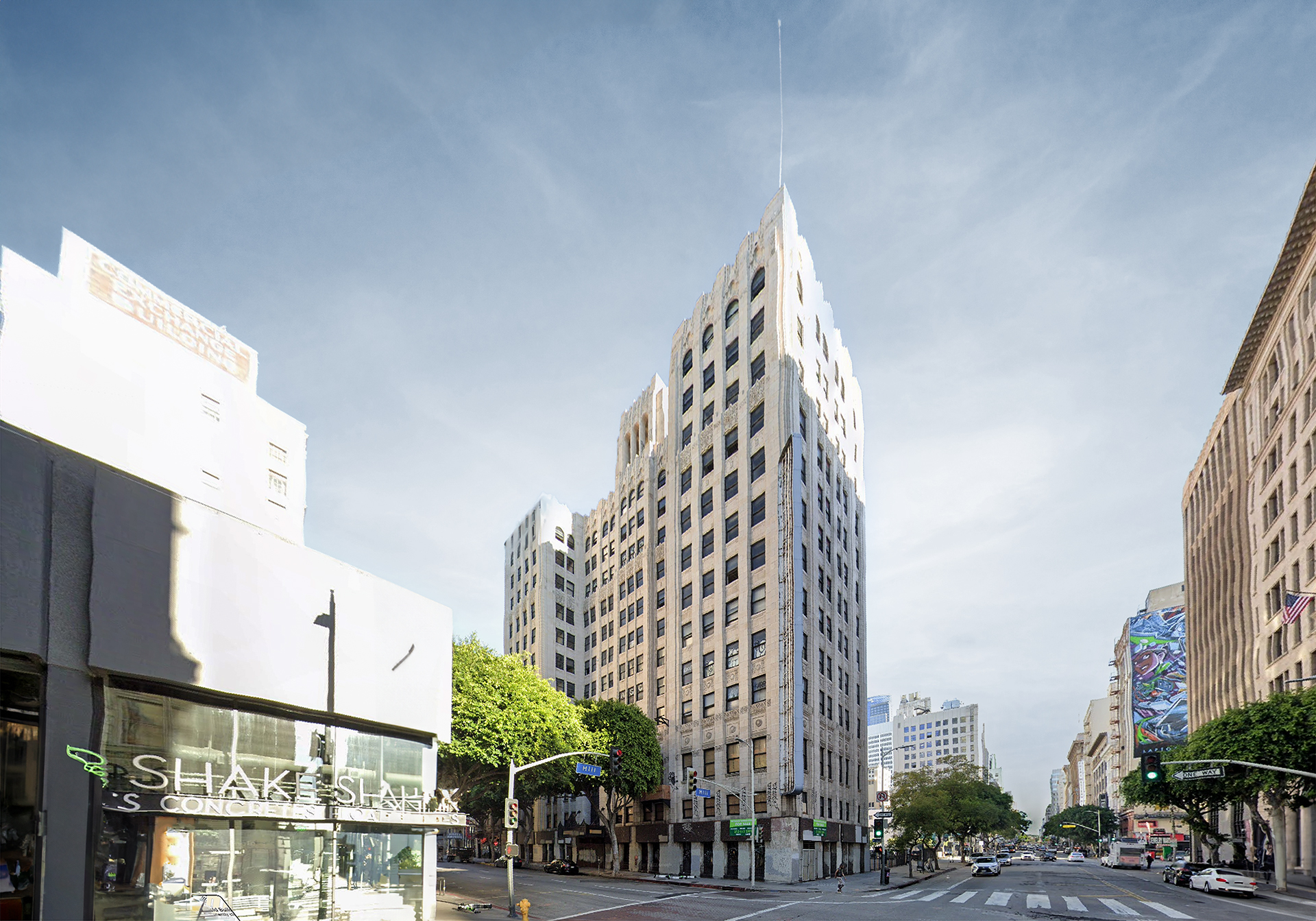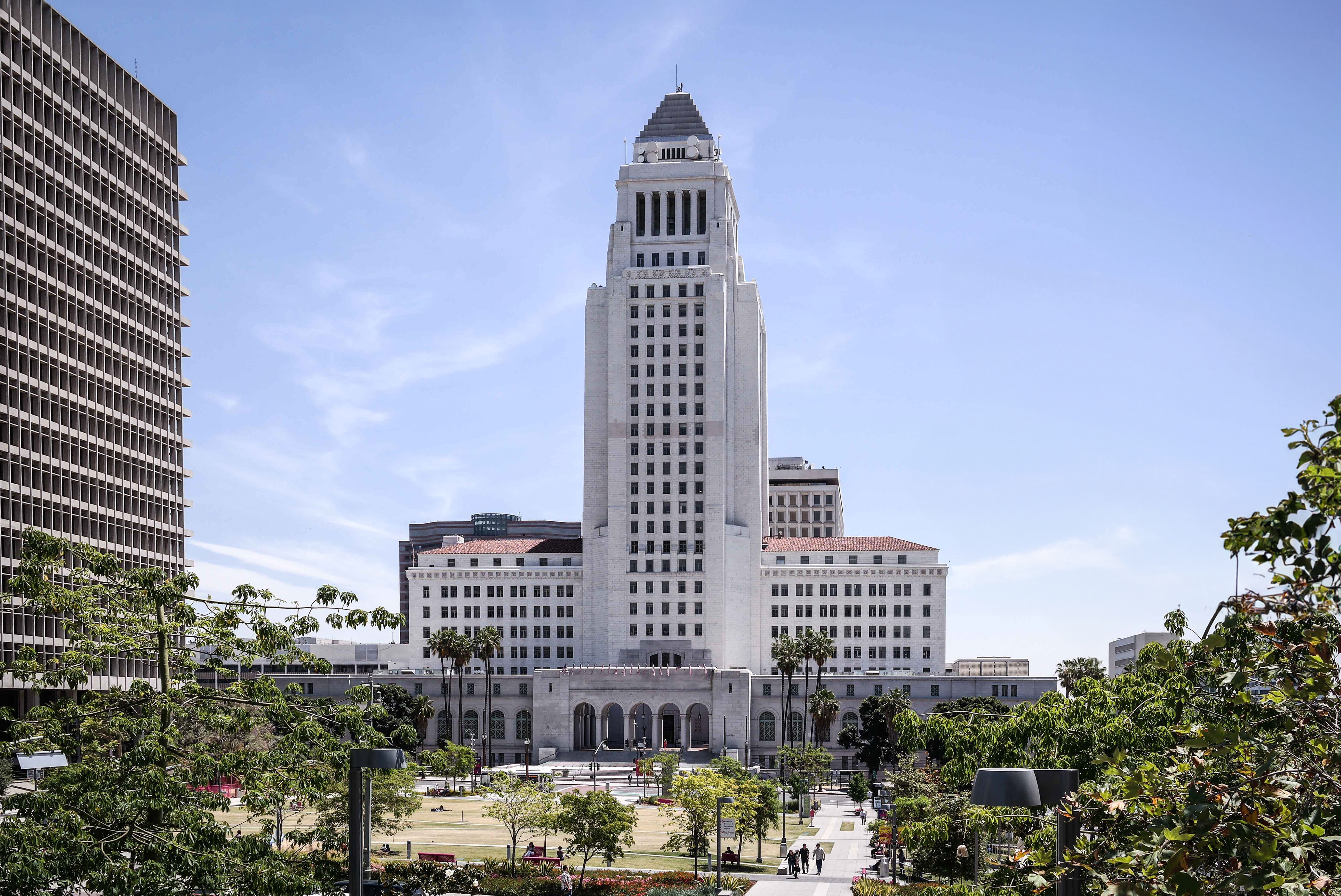The James Oviatt Building is an Art-deco skyscraper designed by Walker & Eisen and built between 1927 and 1928 in Los Angeles, CA.
James Oviatt Building is not the only name you might know this building by though. The building is, or has also been known as The Oviatt Building.
Its precise street address is 617 S. Olive Street, Los Angeles, CA. You can also find it on the map here.
The James Oviatt Building is a structure of significant importance both for the city of Los Angeles and the United States as a nation. The building embodies the distinctive characteristic features of the time in which it was built and the Art Deco style. Because of that, the James Oviatt Building was officially included in the National Register of Historic Places on August 11th 1983.
The building has been restored 3 times over the years to ensure its conservation and adaptation to the pass of time. The main restoration works happened in 1970, 1981 and 1990.
